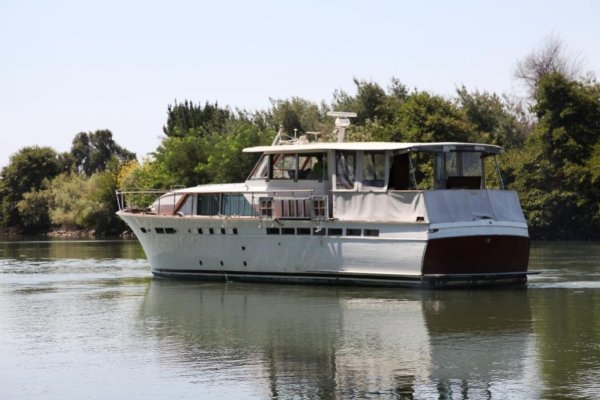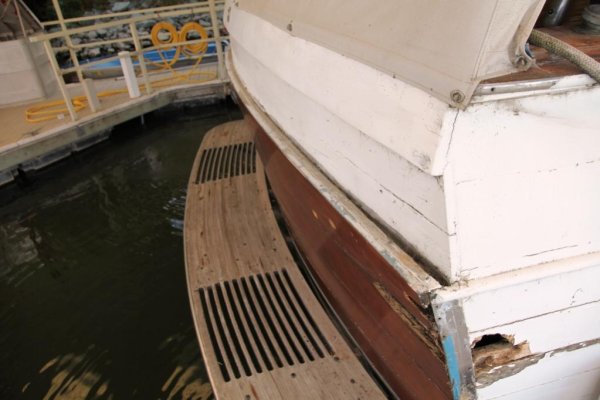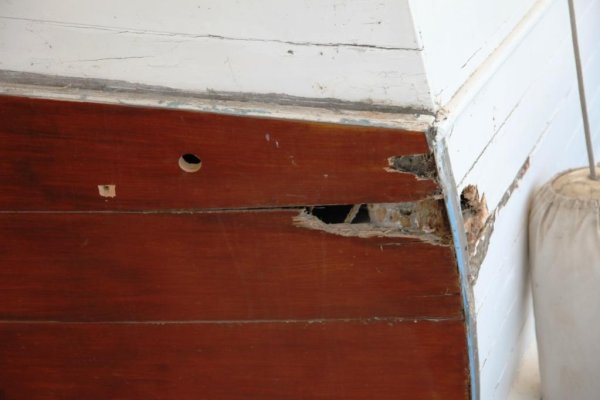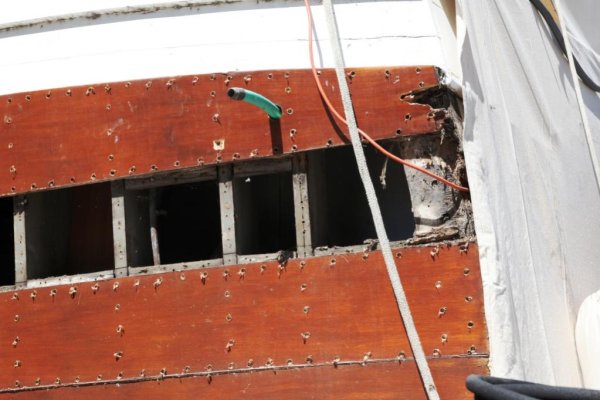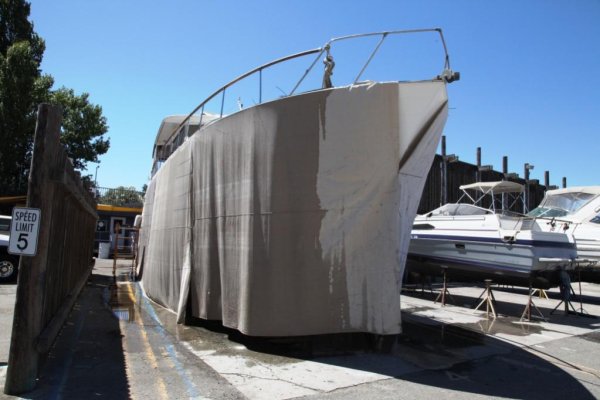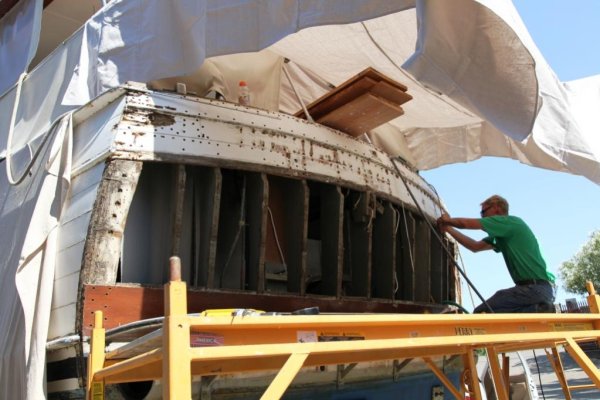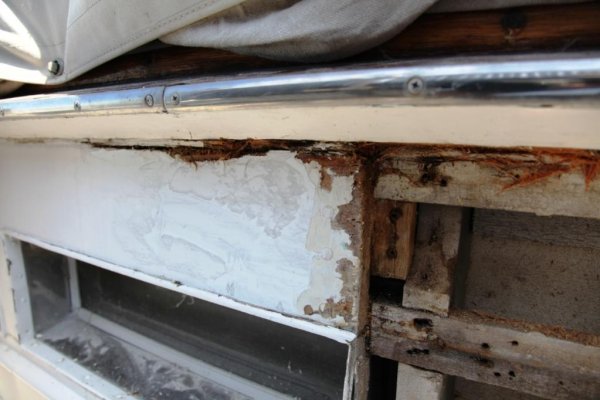Scary
Guru
I'm about to replace the transom and five or six planks above waterline planks on a mid 50's 57' Chris.j Dry rot has eaten up the starboard corner of this lovely boat. I'm stabilizing the rough 4 quarter Philippine Mohagony on the dock now and plan to mill it to 7/8" planking next week. Unfortunately the rub rail pulled away allowing water to penetrate the starboard corner, I may be sistering the frame and replacing rotten wood on this frame. I'm asking opinions on caulking materials as it's been years since I've done this, and I no there must be better products out there than the oakum and oil based putty I used as a youth. I've purchased Life Caulk poly-sulfide caulking in brown for the varnished transom. The hull sides are painted with one part poly paint. There has been some suggestion that I use 3M 5200 or 4200 for the sides. I want this boat to be repairable in the future should planks be damaged. In the old days we used Weld-wood glue or Weld-wood two part glue. I've used tight bond water proof glue for years with excellent results since. I'm open to comment on glue and caulking technique. At this point it seems the Chris was put together without oakum and appears to have a flexible caulking possibly a poly-sulfide. Sealing the back sides of the planking seems like a good idea. These old planks seem to be bare or possibly sealed with oil that has failed over the years. Replacing the planking looks to be very straight forward, there may only be one that will need steaming to bend. Any comments are welcome, I will post photos as we make the repairs.

